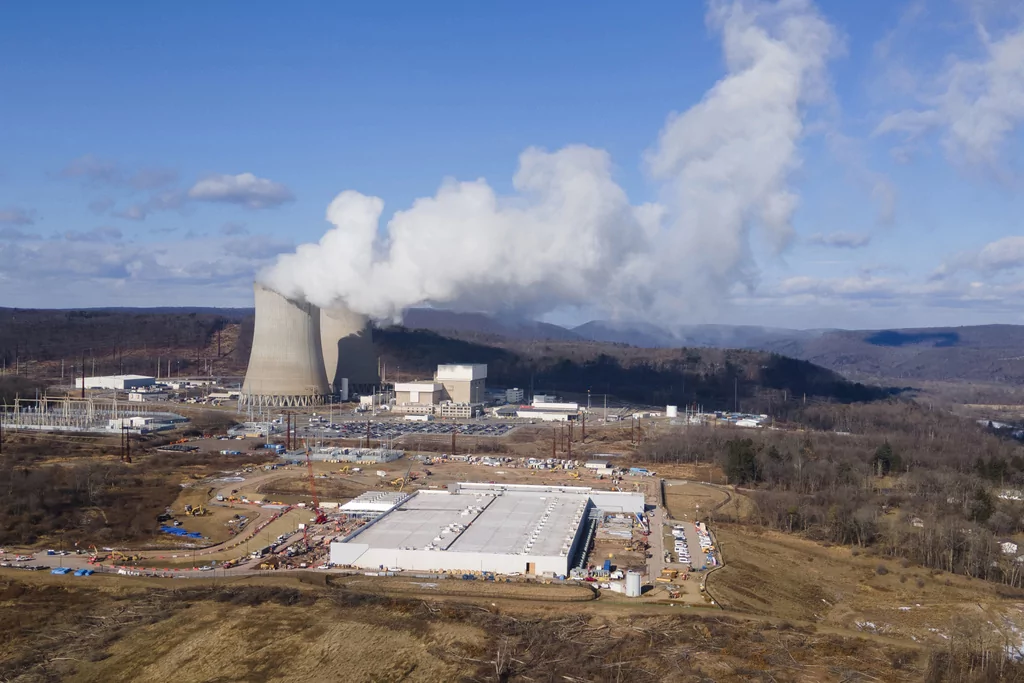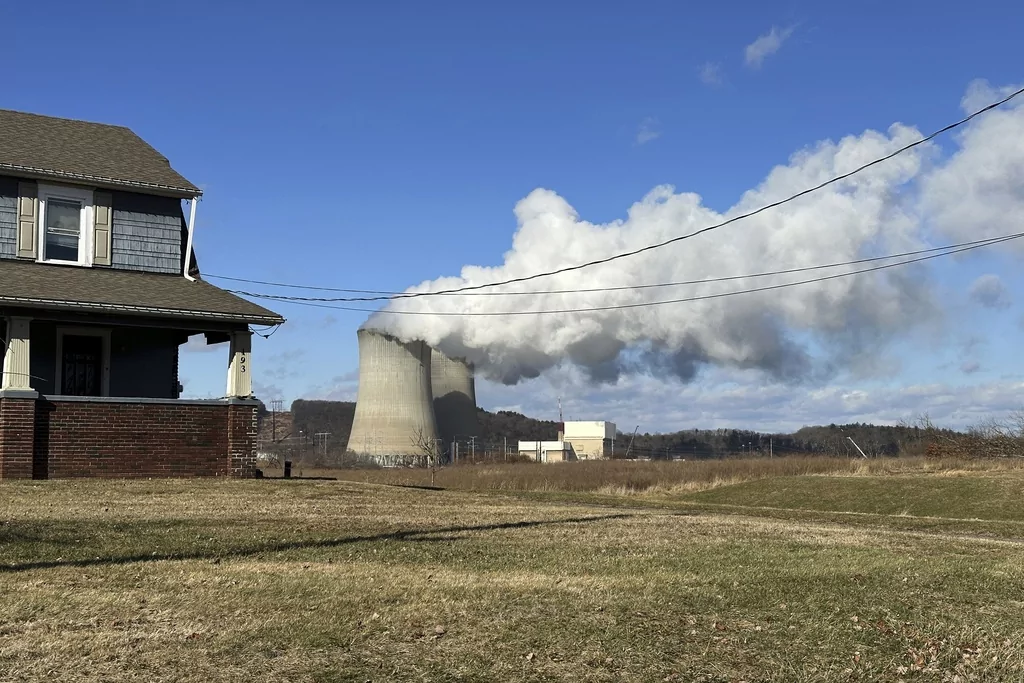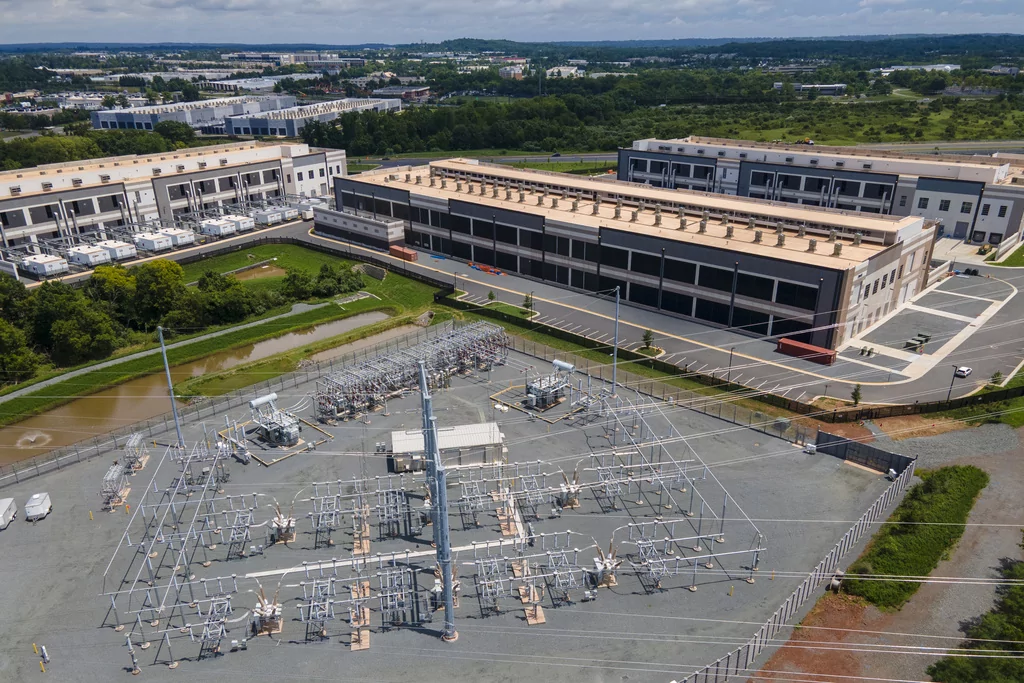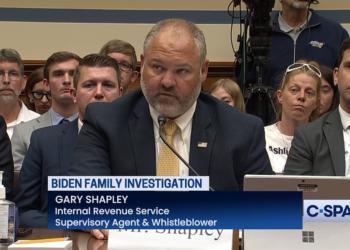As Big Tech races to advance artificial intelligence technology, the need to power data centers quickly and efficiently has become even more important. And for those looking to get ahead, colocating these facilities with existing power plants seems to provide just the solution.
Colocation traditionally refers to the process of building a data center or other large-load facility on the same site or property as the power plant where it draws its energy.
While these colocated data centers can still purchase that power directly from the grid, interest has grown around the idea of connecting these large-load facilities directly to operating power plants, a process better known in the industry as “behind the meter.” This allows the power-hungry facilities to skip the lengthy and expensive interconnection process of hooking up data centers to the already strained grid.
But it does come at a cost. In the case of existing power plants, any electricity diverted directly to a new data center may need to be taken away from existing customers.
Driving colocation curiosity
No matter what sector of the energy and technology industry you might work in, there is one thing everyone can agree on: Data centers use a lot of power.

These facilities can vary in size, with small data centers often only using between 1 and 5 megawatts of power. The large facilities that Big Tech has been throwing its investments behind have been known to use well over 100 megawatts of power.
By comparison, 1 megawatt is traditionally considered to be roughly the same amount of energy consumed by 400 to 900 homes in one year.
THE INTEGRATION ERA: HOW AI IS UPENDING OUR INSTITUTIONS
This energy use is only expected to grow. In March, the Center for Strategic and International Studies forecast that by 2030, AI data centers in the United States will be consuming upward of 84 gigawatts. Last year, these same data centers only consumed about 4 gigawatts.
“The real issue that’s driving colocation is the need to address the immediate load growth that’s associated with the addition of the data center. And that immediate load growth can be quite substantial in some cases,” Matt Barbara, a lawyer with Calfee’s Energy and Utilities practice, told the Washington Examiner.
“This creates a need, a localized need for generation, whereas in the past, load growth was much more gradual,” Barbara continued. “It was associated with population growth, industry growth, and that could be supported by projecting generation additions and system upgrades through planning processes.”
Given the extensive costs associated with bringing one of these data centers online, it comes as no surprise that larger tech companies would seek to save where they can when it comes to powering the facilities.
Amazon has been a key driver behind the colocation conversation. In early 2024, it announced it would be building a data center for its subsidiary Amazon Web Services next to the Susquehanna nuclear plant in Pennsylvania.
The company is planning to purchase power from the plant’s owner, Talen Energy, in 120-megawatt increments, which could grow up to 960 megawatts in total.
Since the deal was announced, Talen and grid operator PJM Interconnection sought to increase the amount of energy that would be sent directly to the data center, up to 480 megawatts from 300 megawatts in the existing interconnection service agreement.
By increasing the amount of energy sold to the data center behind the meter, Talen could, in theory, sell the power at a higher rate than when selling into the grid.
While seemingly a win for the utility and tech companies, the request was rejected by the Federal Energy Regulatory Commission in November.
Where ‘behind the meter’ falls short
One of the biggest questions about behind-the-meter colocation is the impact that significant load consumption from data centers will have on existing consumers.
Behind-the-meter deals could benefit others on the grid, freeing up more transmission capacity while it plugs directly into the power plant. But critics say it’s not as simple as that.
Joseph Bowring, the president of Monitoring Analytics and a longtime independent market monitor for PJM, told the Washington Examiner that it doesn’t matter if a data center is colocated or not; its significant load can be expected to raise capacity market prices and energy prices.
“If it’s behind the meter, it’s not paying its share, and therefore other customers’ payments for transmission are higher than they should be,” Bowring said. “So the question is whether they should be allowed to simply avoid paying the cost of transmission. And our answer is no, and that goes for any load. … If your house is closer to the transformer than mine, that doesn’t mean you pay less for transmission than I do.”

In the case of Amazon and Susquehanna, American Electric Power and Exelon claimed the expanded behind-the-meter deal would impose up to $140 million in transmission costs onto other customers within the PJM region.
“The issue with colocation is you’re taking existing capacity behind the meter at a time where capacity is already constrained and prices are already high. And so you’ll basically be spreading out higher costs amongst fewer rate papers,” former FERC Chairman Neil Chatterjee told the Washington Examiner.
AI and data centers threaten to overwhelm power grid, former regulators warn
Chatterjee explained that federal regulators have been put in a tight position in which supporting these deals could leave them responsible for increasing consumer costs or threats to long-term reliability and resource adequacy problems.
However, if they oppose behind-the-meter colocation deals, regulators could find themselves slowing the U.S.’s ability to get ahead of China in the AI race.
FERC Commissioner Willie Phillips pointed to this argument in his dissent from the November decision. Phillips called the rejection of Talen’s request “a step backward” when it comes to national security and the country’s “pole position” with AI.
Other options
As the need for more energy to power AI advancements grows, behind-the-meter deals could be inevitable for the industry, but regulators aren’t ready yet.
Still, this immediate need for power hasn’t gone away, leaving tech companies searching for a way to secure reliable energy for their data centers.
To Bowring, it’s time for Big Tech to be patient.
“Just imagine you have no spare capacity whatsoever, which is pretty close to where PJM is now, and let’s just say you want to add 5,000 megawatts of data centers. Well, it does not make sense to do that, because you’re driving a system short and triggering all kinds of both price increases, but also reliability issues,” Bowring told the Washington Examiner. “So while it’s important to serve loads, you can’t serve it without thinking about doing it sensibly, and it’s not sensible to add large amounts of load if you can’t serve it reliably.”
With questions surrounding “behind the meter” for existing plants, former Kentucky Public Service Commission Chairman Kent Chandler explained there are growing discussions and interest in colocation with new generation.

This would likely involve building new gas plants or renewable energy sites, such as wind and solar farms, to power new data centers to avoid taking any existing electricity from the grid.
“What I expect is that you’ll have people bring on gas plants, colocate them while waiting for the gas plant to get connected to the grid, and then the gas plant will get connected to the grid, and then that customer will choose whether on any particular hour they want to have the gas plant run for their benefit, or buy power from the grid,” Chandler said.
Nuclear power has become an attractive option, particularly due to its lack of carbon emissions and high reliability.
The Energy Information Administration estimates that operating nuclear facilities in the U.S. have a capacity factor of 93%, meaning the plants operate at full capacity 93% of the time. Solar and wind have capacity factors of 23% and 33%, respectively. Coal is 42%, and a combined cycle for natural gas is at 58.8%.
As new natural gas turbines can take up to eight years to get running, some tech companies are looking to advanced nuclear solutions like small modular reactors that, in theory, can get online quicker.
In October, Google announced a deal with Kairos Power to purchase energy from a fleet of SMRs to support its data centers, with the first reactor coming online by 2030.
Alternatively, some within the industry are advocating other solutions, such as supplemental colocation deals. This can work well for data centers and other large-load facilities already receiving a certain amount of energy from a utility through the grid that is looking to expand its capacity.
While the utility might not be able to increase the amount of power it sends to the data center, the facility can look into purchasing more power from separate companies that offer mobile gas turbines or other units that can be colocated directly with the data center.
What comes next
These AI-powered data centers are on track to reshape the grid and connections to power plants. What that could be like on a national scale is yet to be seen.
Last year, Talen Energy requested a rehearing regarding FERC’s decision on the expansion of its behind-the-meter deal with Amazon, a request that was denied on April 10. The commission, with Phillips dissenting again, stood by its original ruling.
Talen Energy told the Washington Examiner it was “not surprised” by the commission’s decision, saying it “now allows us to pursue our appeal right on the merits in the 5th Circuit.”
The utility filed a lawsuit against FERC in the 5th U.S. Circuit Court of Appeals in New Orleans in January, asking the court to review the commissioner’s ruling. The suit may result in the commission’s decisions being overturned, paving the way for future data center colocation with nuclear power plants in particular.
Following FERC’s ruling late last year, the commission has moved to offer clarity and rules on colocation agreements as well as what role state regulators should play in enforcing the regulations.
The independent agency began the process in February by taking a closer look at PJM’s colocation rules, asking the grid operator to explain why its rules are fair and reasonable or offer any changes to make them so.
At the end of March, PJM insisted to the commissioners that its rules are just and fair and did not offer any changes. As a result, analysts have estimated it may take several months for the agency to issue and approve sweeping regulations on the issue, even as far out as early 2026.
Trump reestablishes AI Wild West with executive order
As FERC has stuck with its decision in the case of Amazon and Susquehanna, Bowring is hopeful that the ruling will carry through the possible rules the commission approves.
Still, he emphasized it is important to see these data centers served reliably, possibly through their own generation.
“I mean, I don’t think it needs to be required, but there should be a faster path to getting online if you bring your own generation than if you don’t,” he said.














